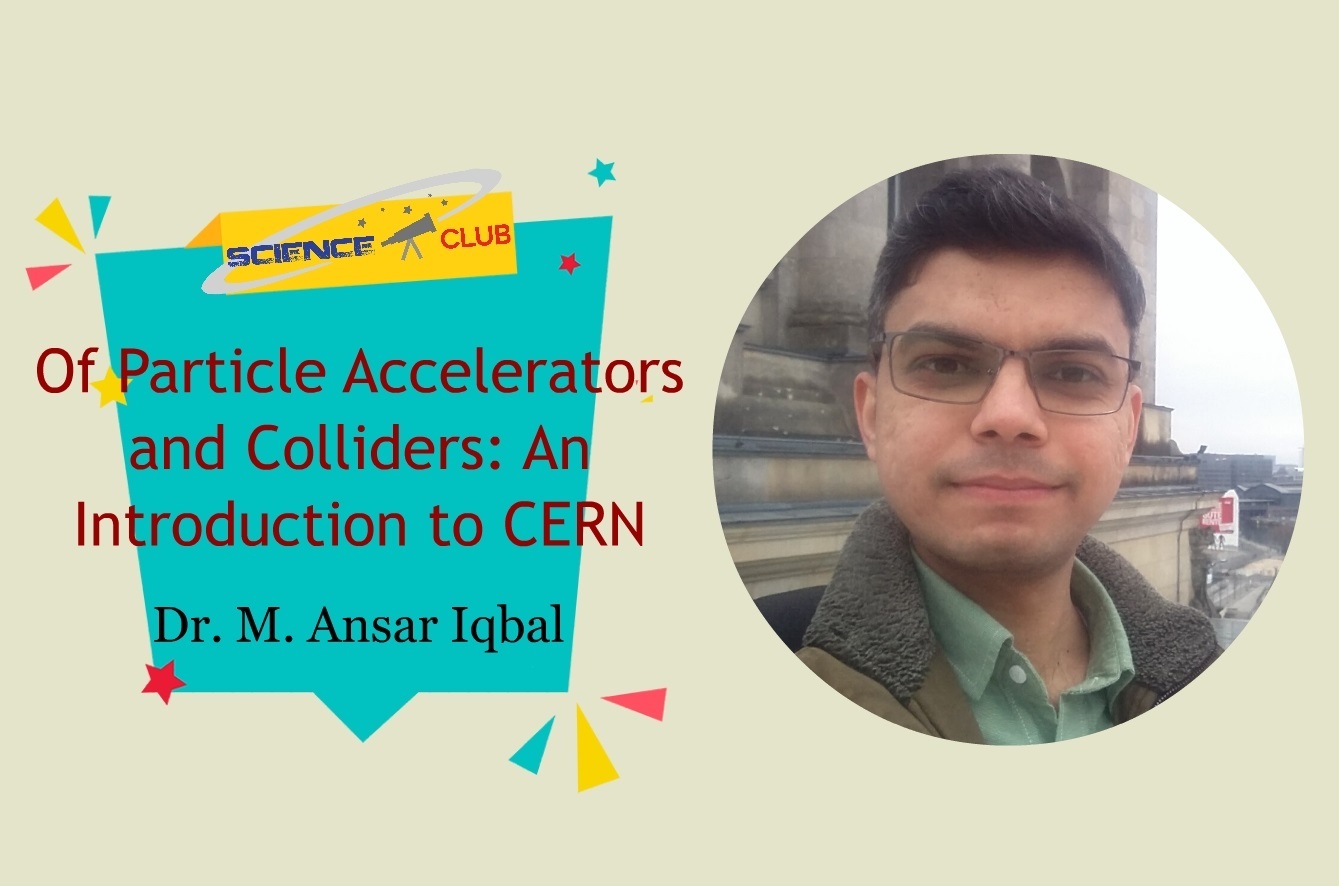
Of Particle Accelerators and Colliders: An Introduction to CERN
Since eons past, we have been trying to make sense of what everything around us is made up of. At CERN, and its flagship accelerator, the Large Hadron Collider (LHC), researchers are trying to experimentally answer this very question. In this talk, we’ll try to get a taste of how, on one hand, experiments at the LHC are testing the limits of the best-known model, called the standard model, of particle physics; and on the other hand, looking for exciting new phenomena that the standard model does not explain, including dark matter and extra dimensions. We’ll also glance at how this enormous task is technically achieved, starting from a bottle of hydrogen, accelerating particles to extremely high energies, colliding them with one another, and studying the resulting “debris”.
About the speaker:
Dr. Muhammad Ansar Iqbal is an experimental particle physicist at the European Organization for Nuclear Research (CERN) located at the border of Switzerland and France. He did his Bachelors in Electrical Engineering from College of EME, NUST, and then got an M.Sc and M.Phil in Physics from Quaid-e-Azam University, Islamabad, wherein parts of his M.Phil research were conducted at CERN. Afterwards, he moved to Germany to pursue a PhD in experimental particle physics at Karlsruhe Institute of Technology (KIT), Germany. Since finishing his PhD, he has been working with the Compact Muon Solenoid (CMS) experiment at the Large Hadron Collider (LHC) at CERN.
His recent research interests include the so-called “long-lived” exotic particles and model-independent searches of Beyond the Standard Model (BSM) Physics. Outside of work, he loves reading and learning about interesting concepts and ideas in physics and mathematics. In his free time, he also likes to travel, do arts, and read and write poetry.